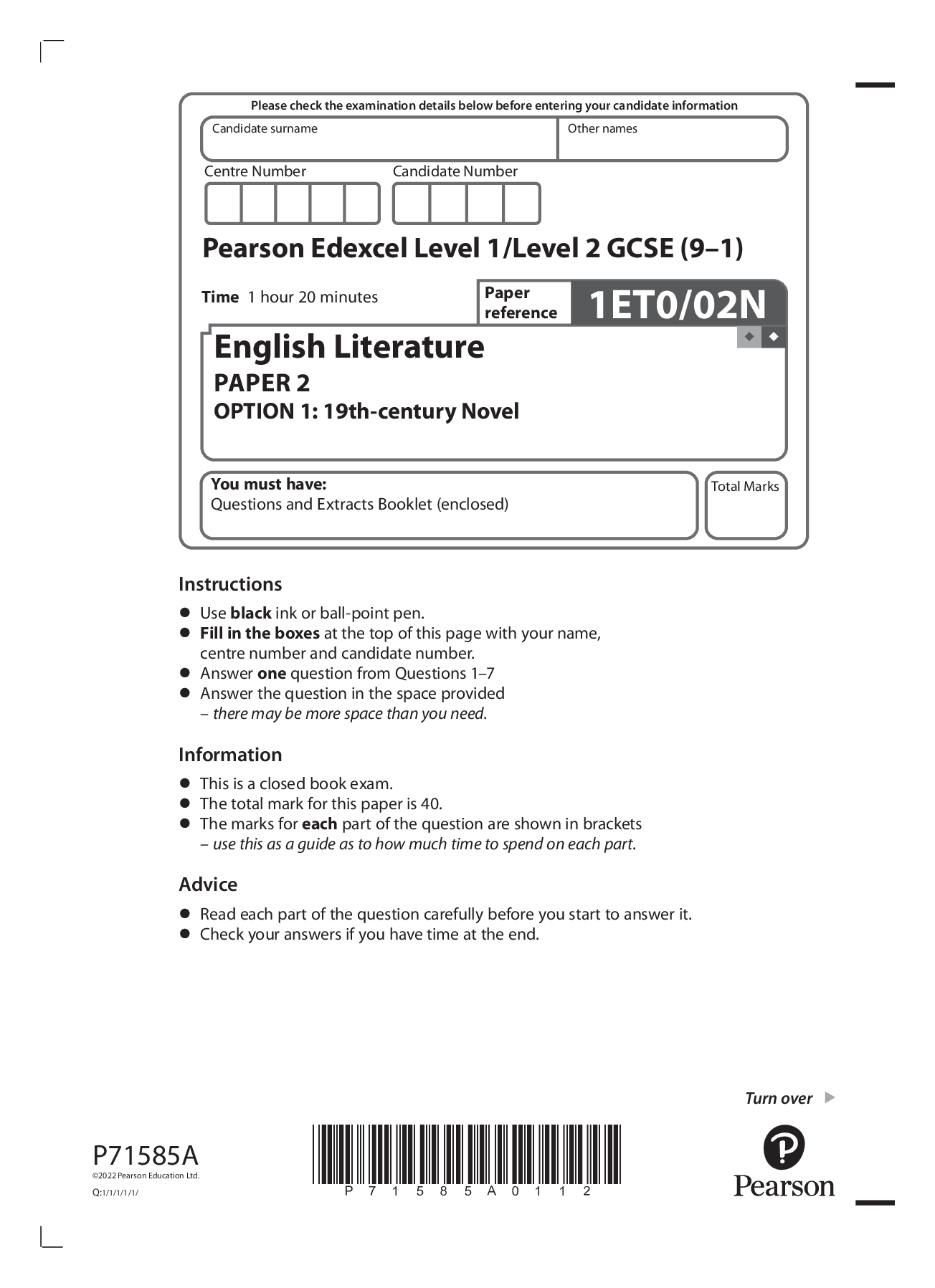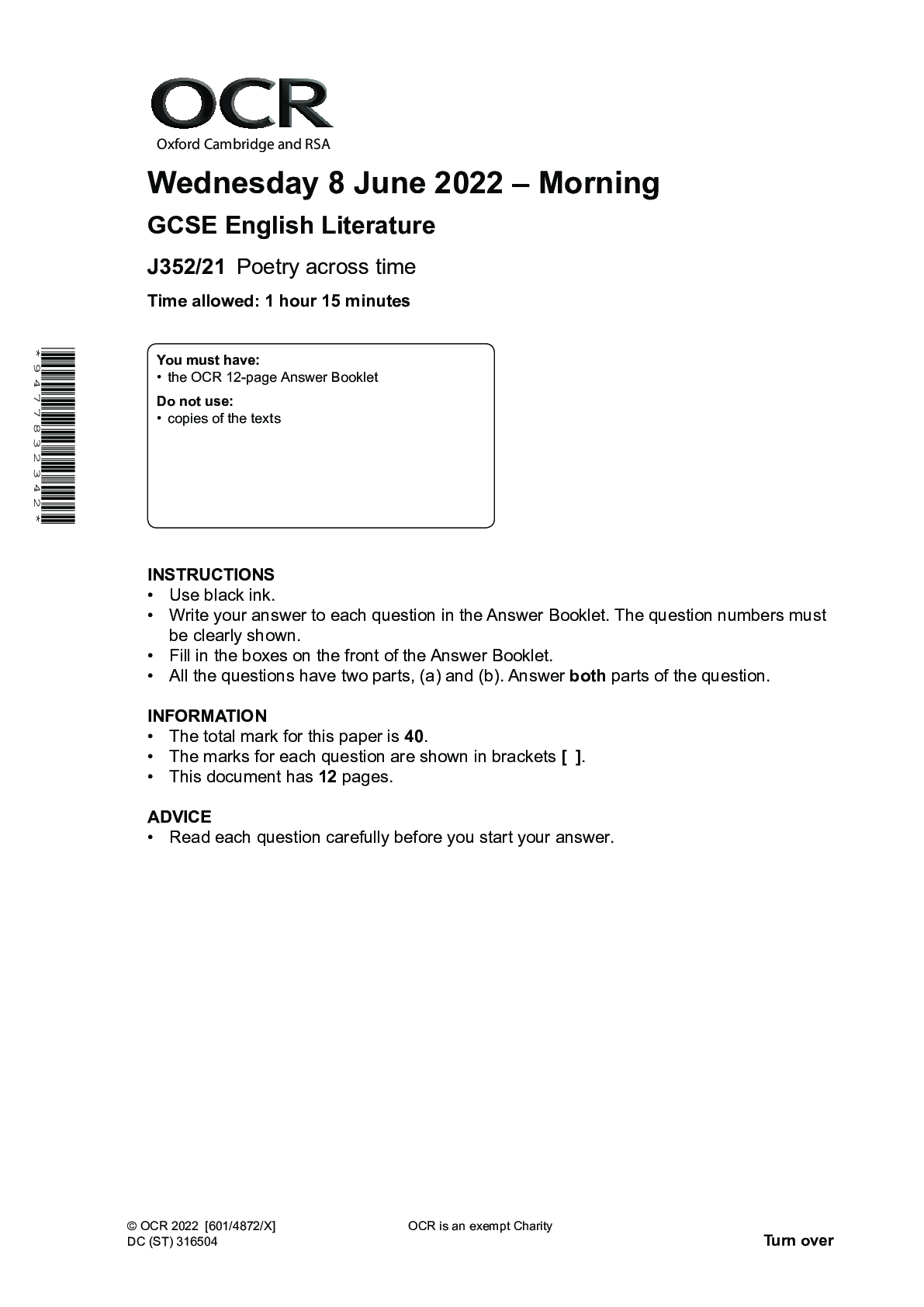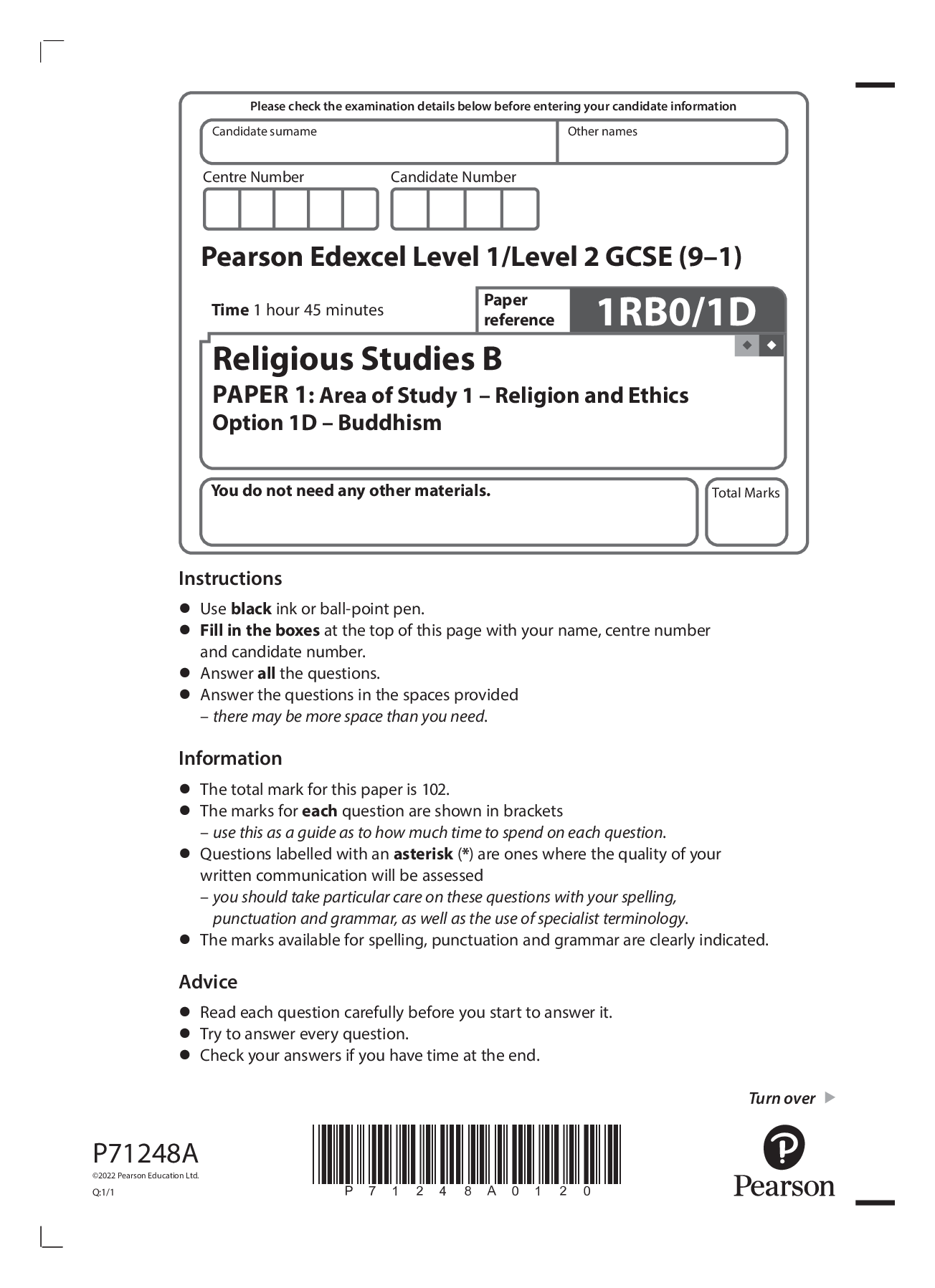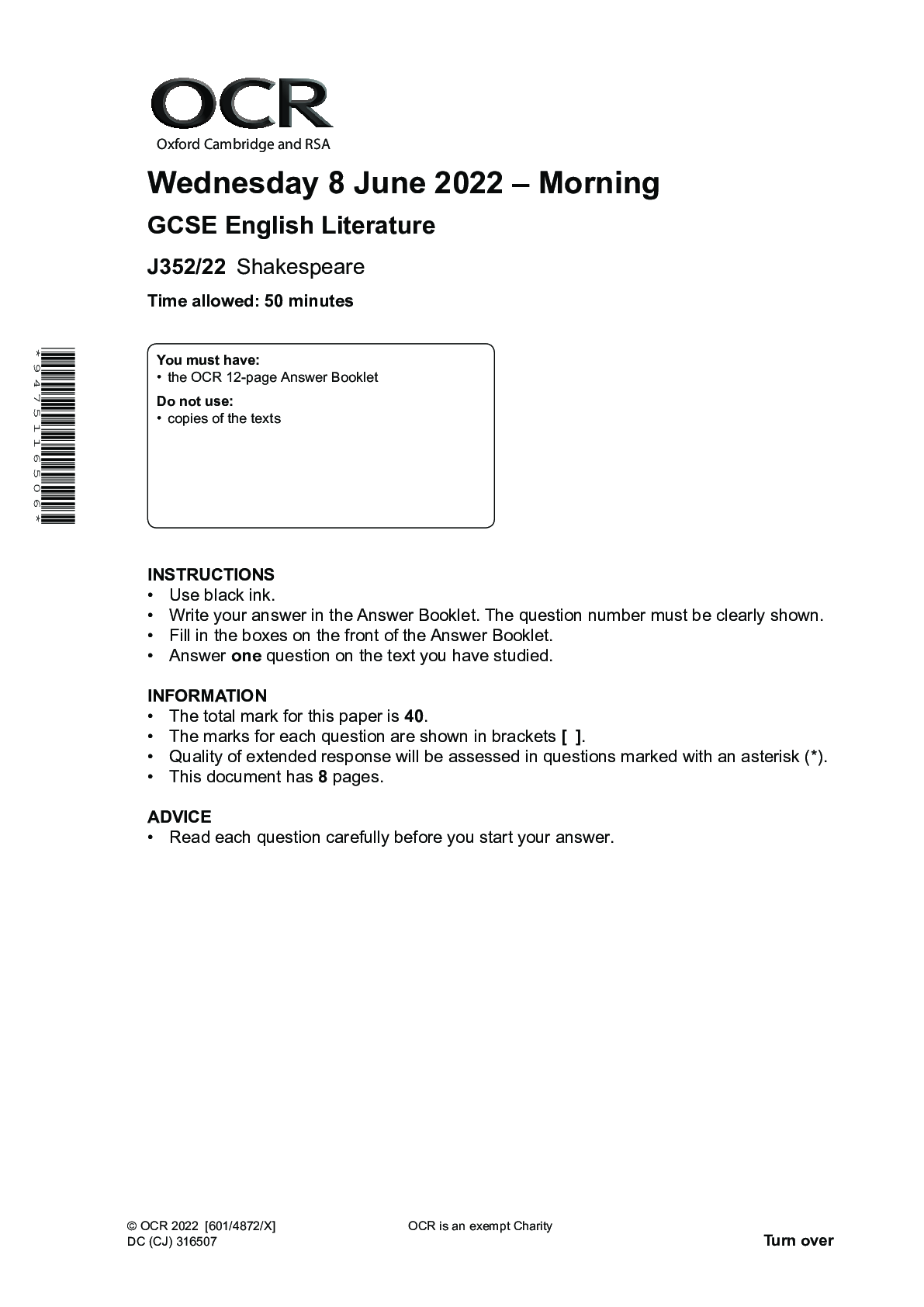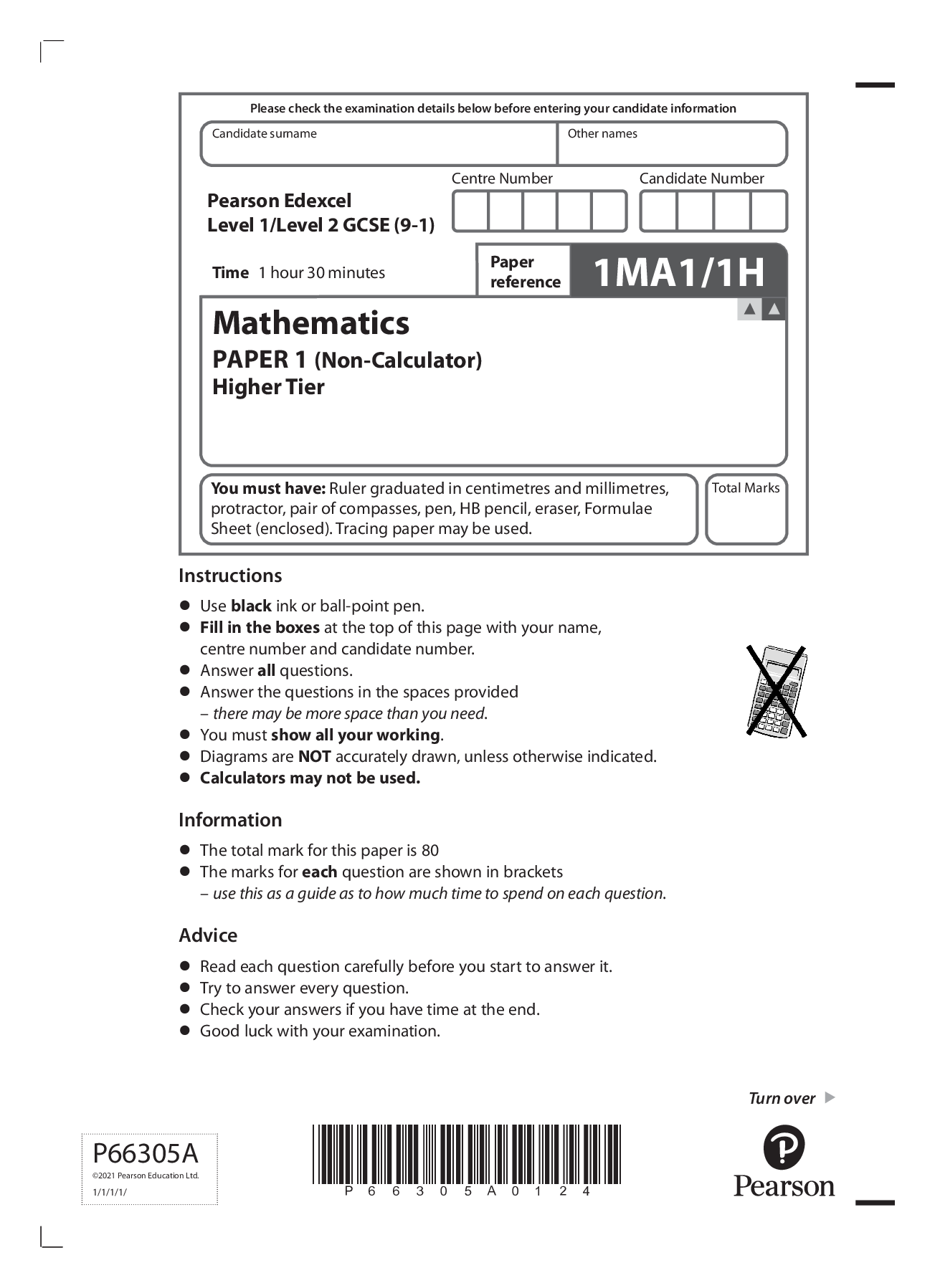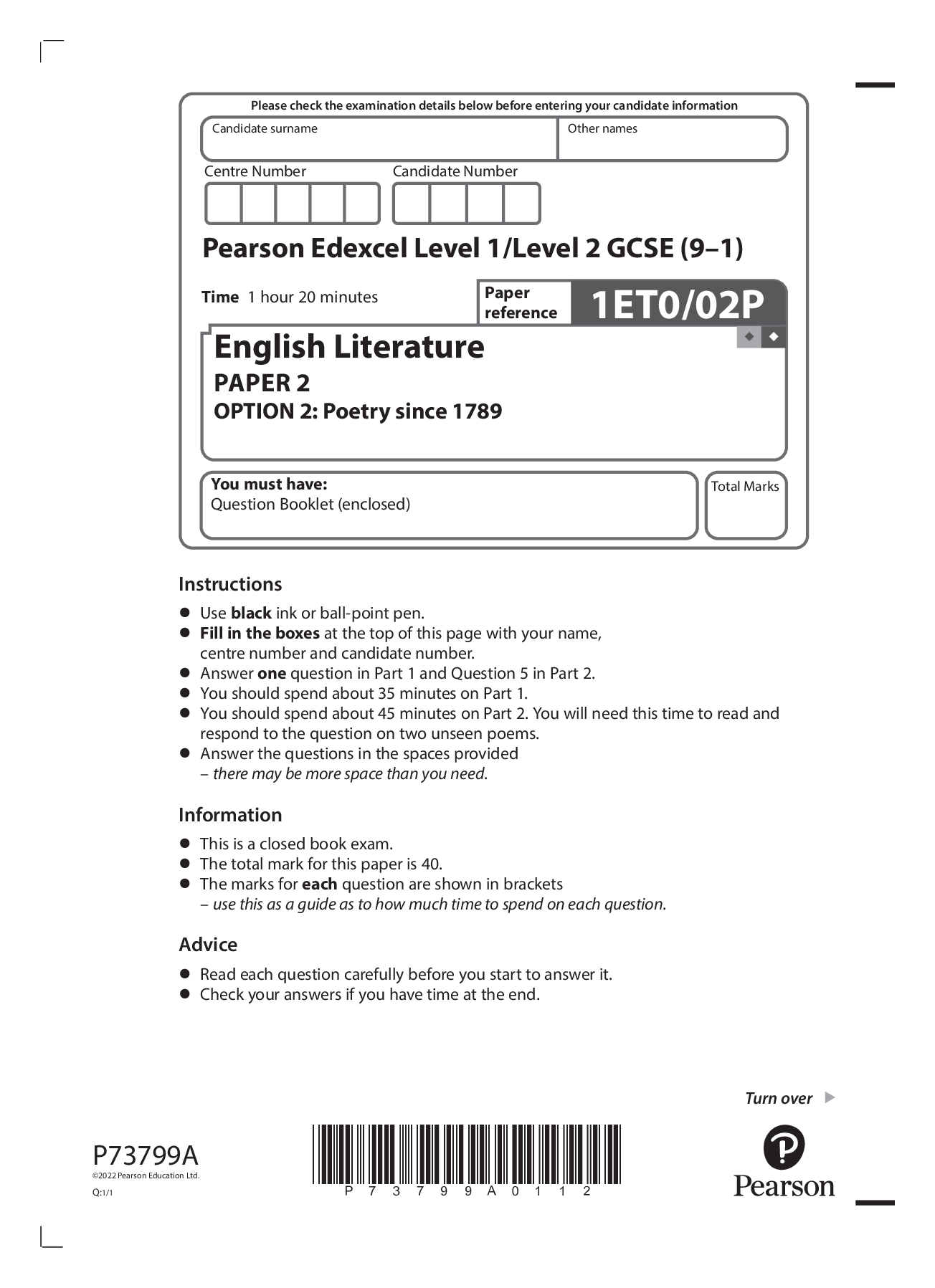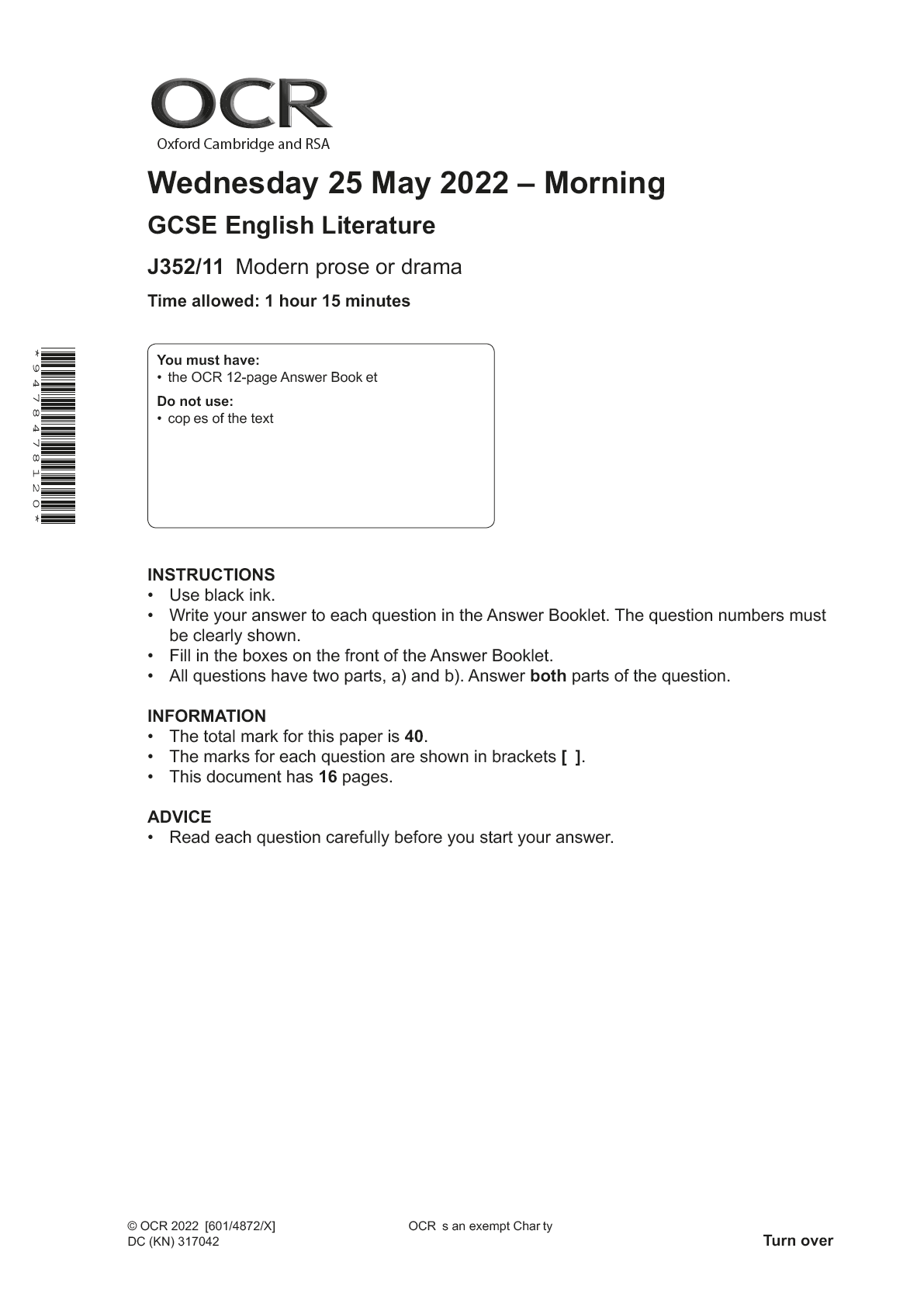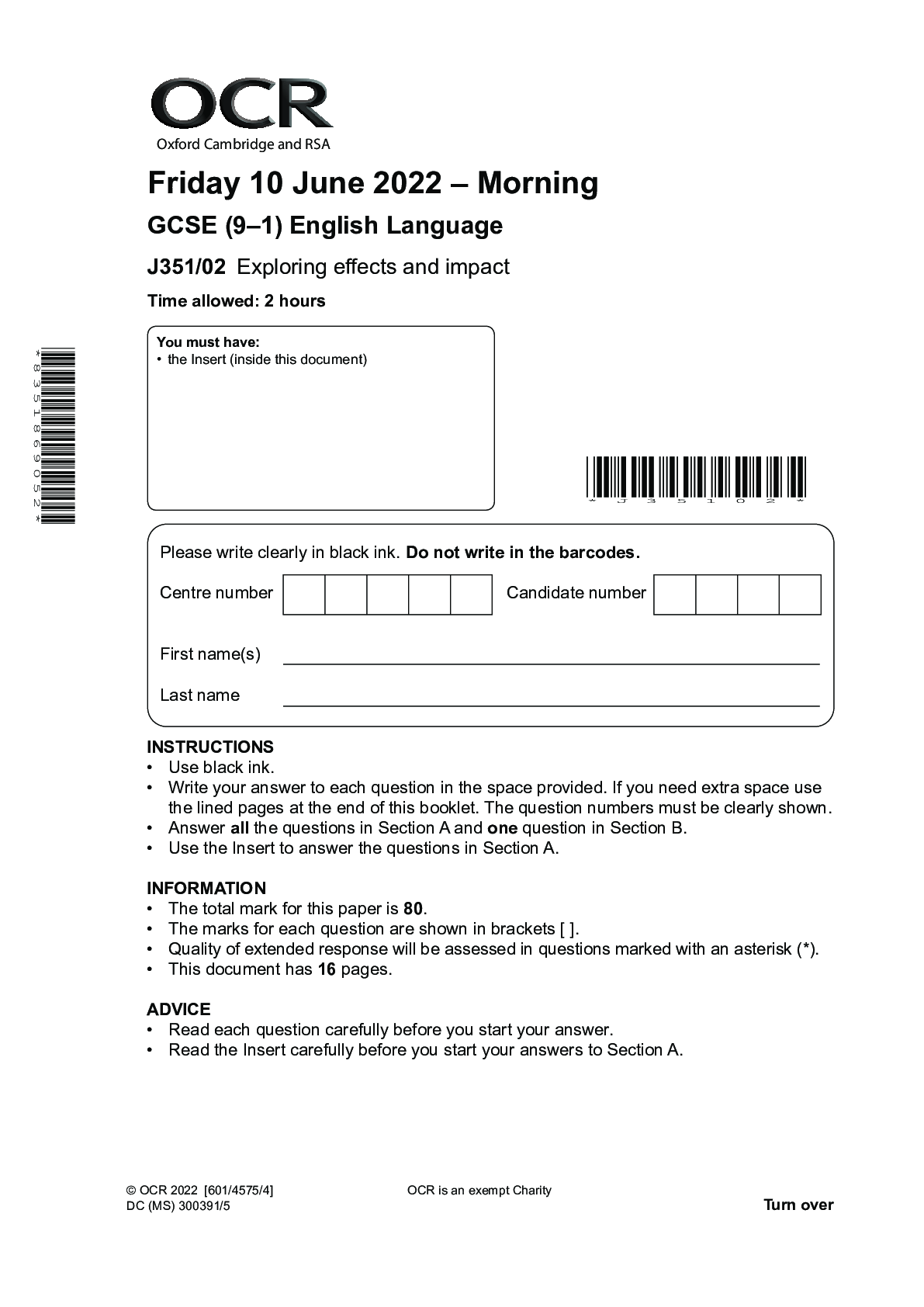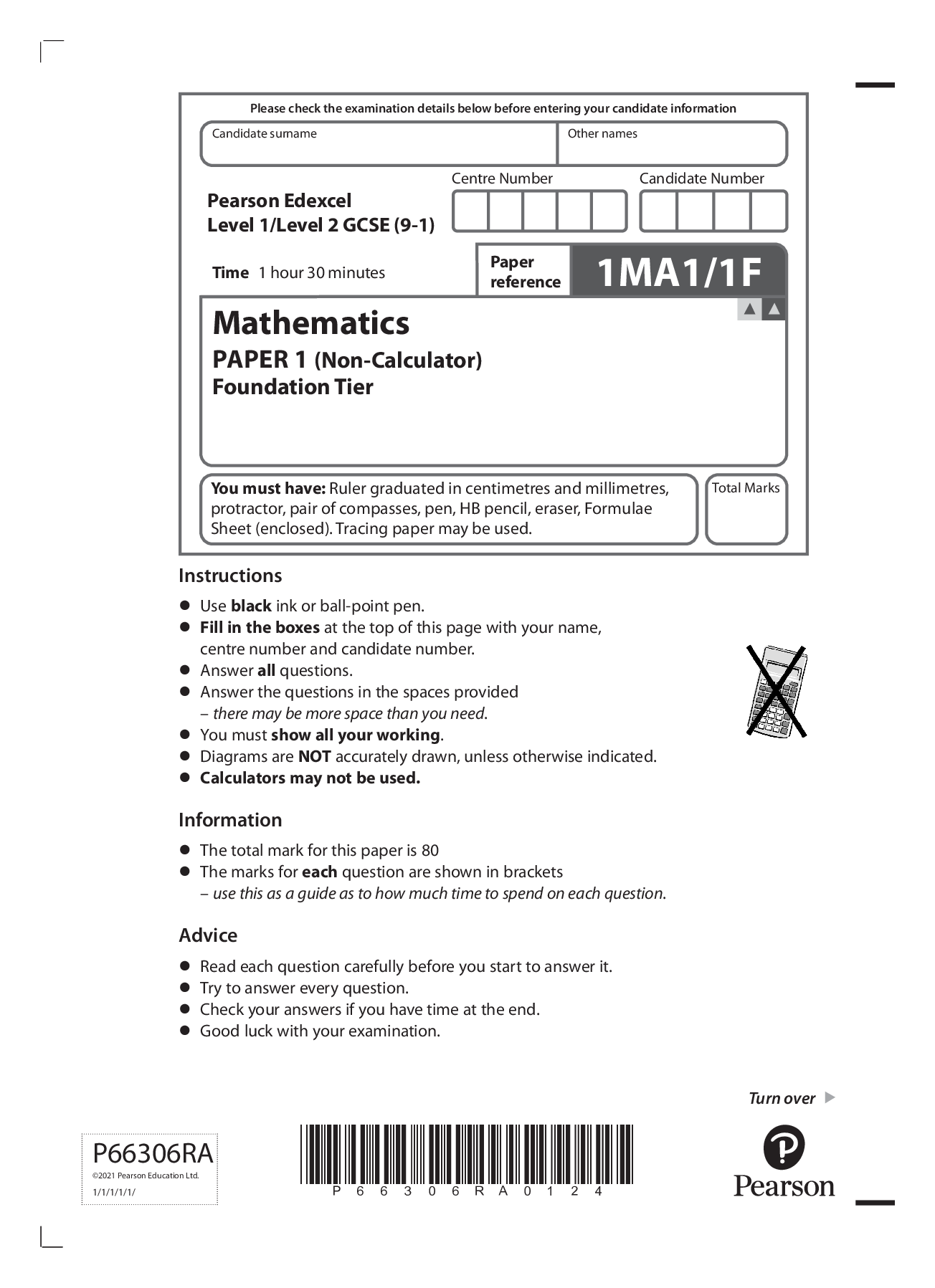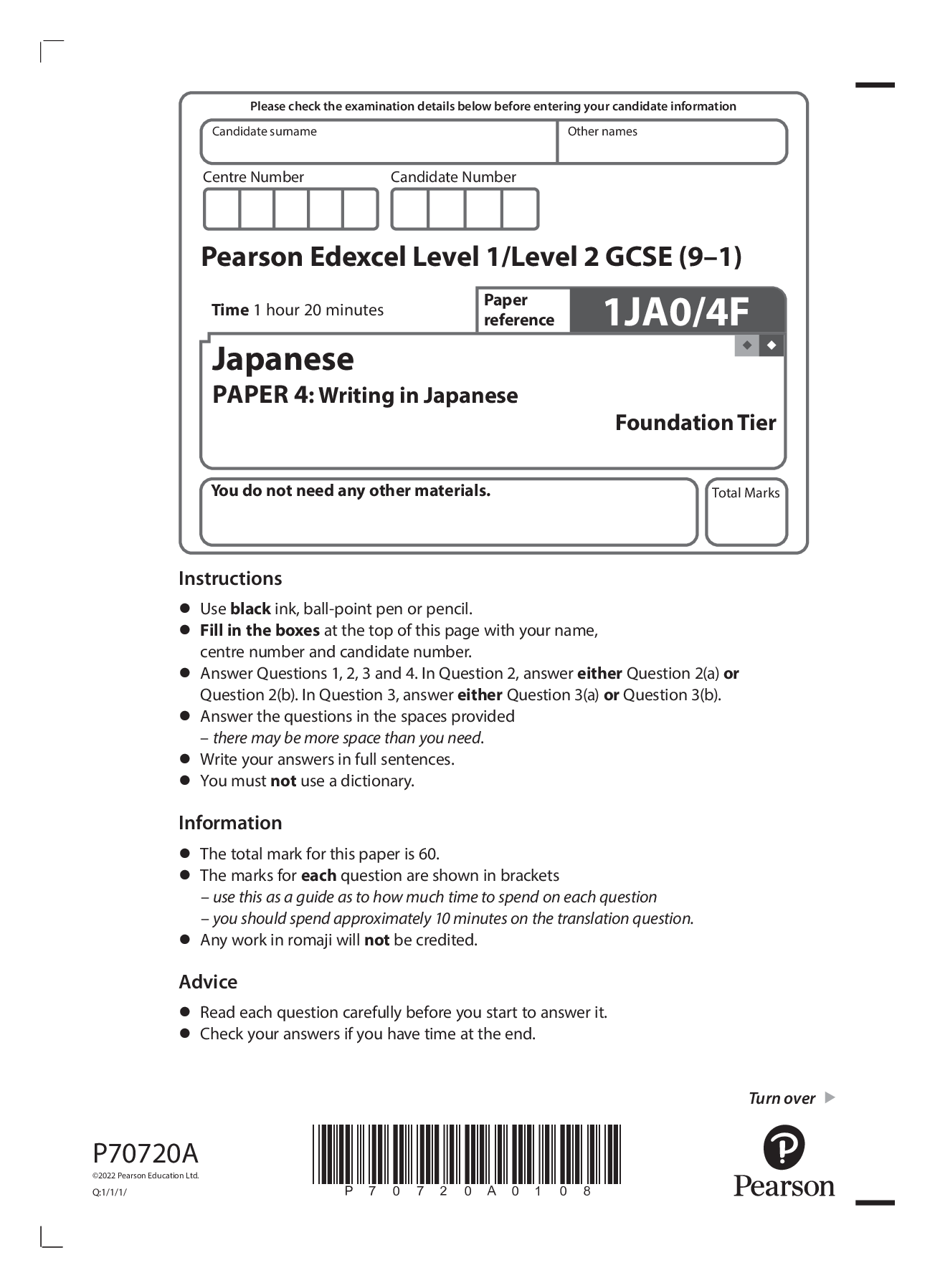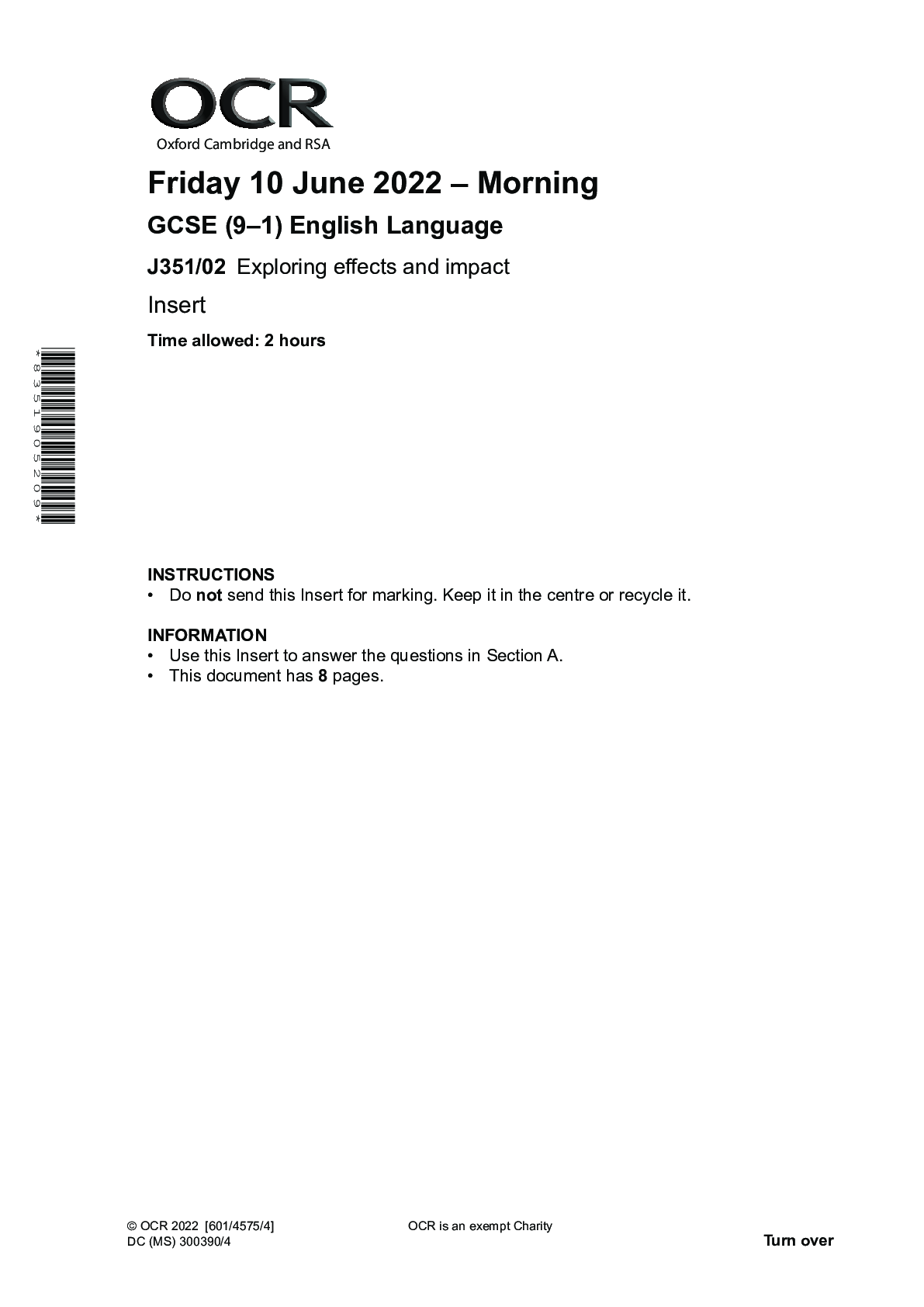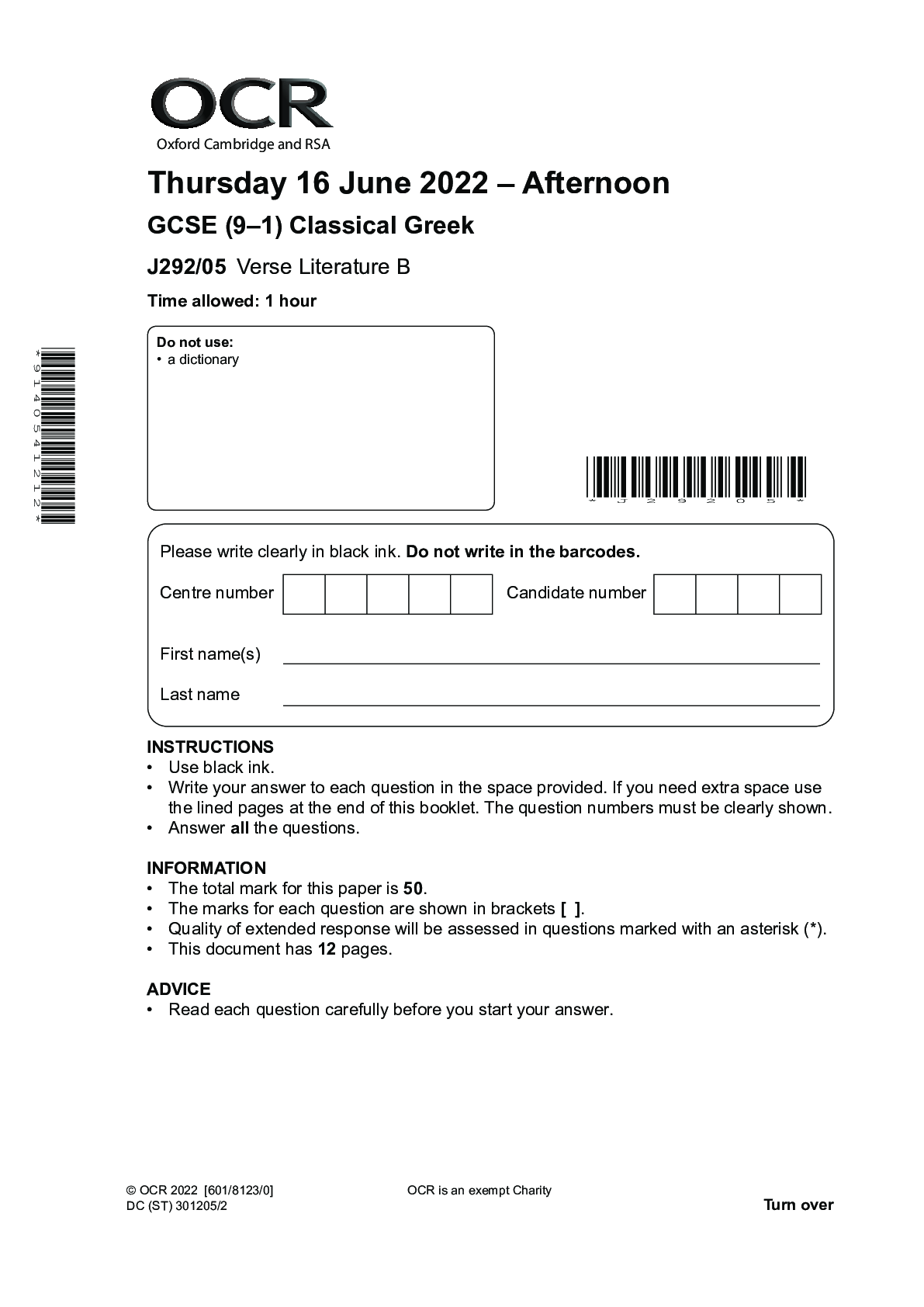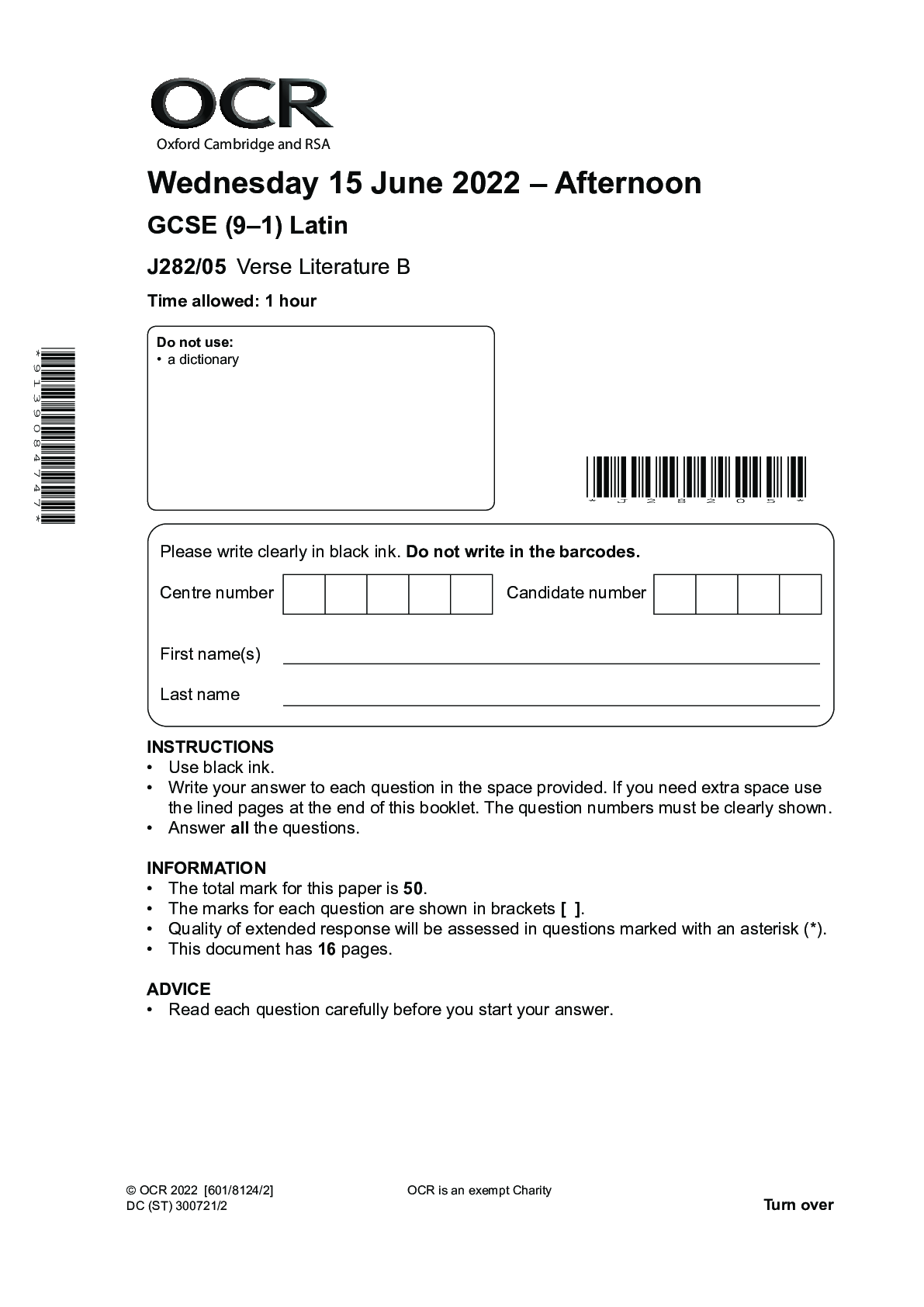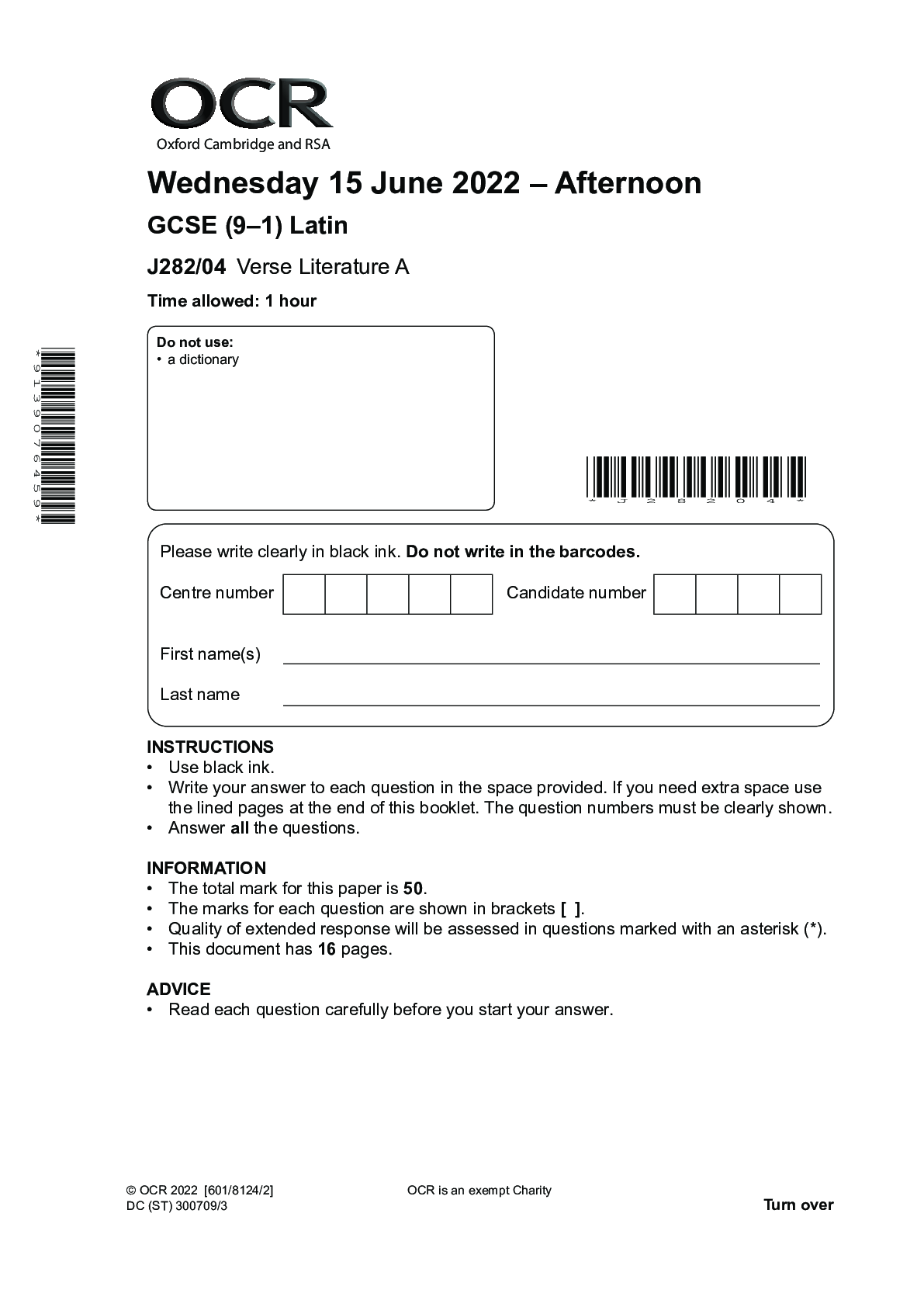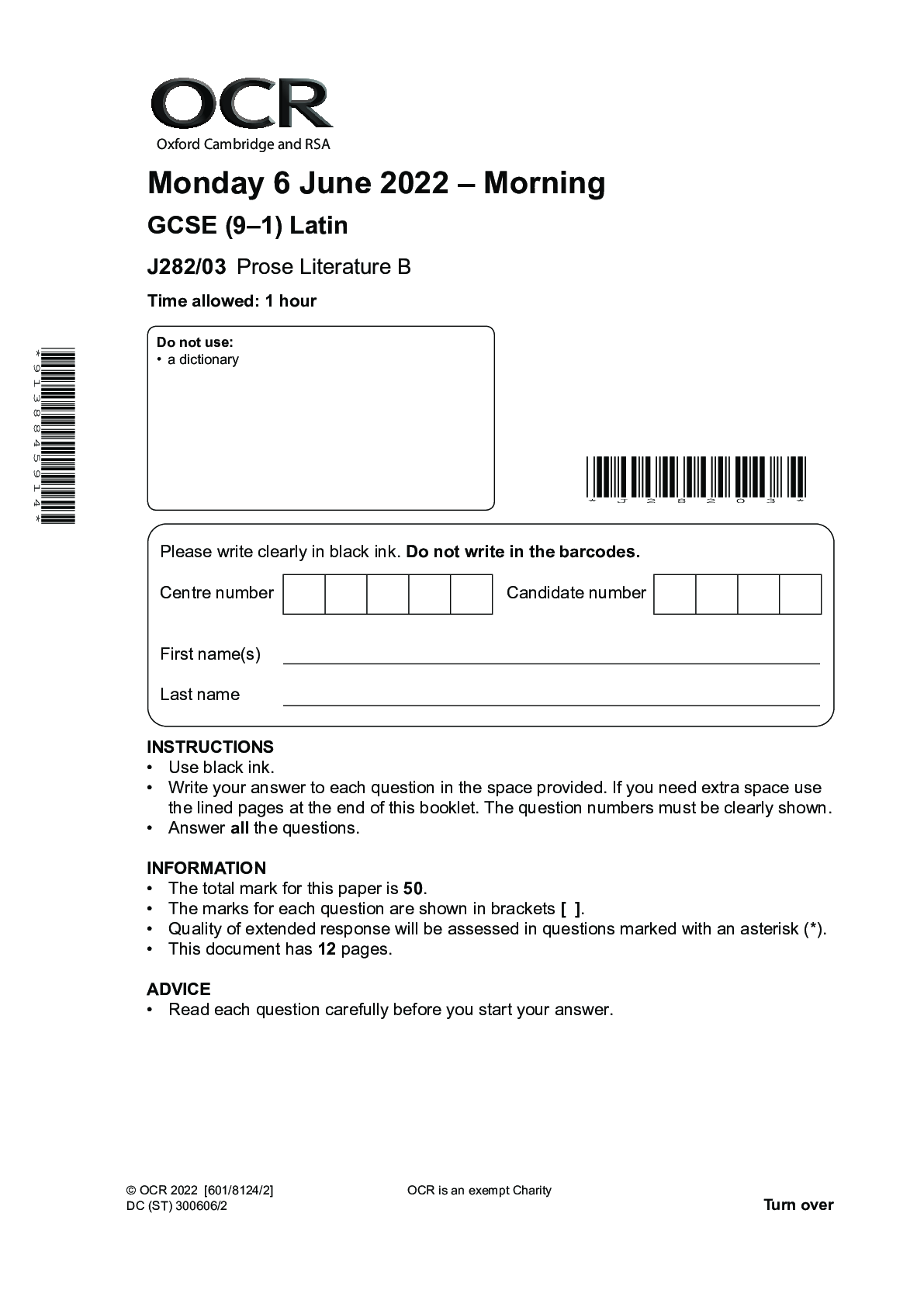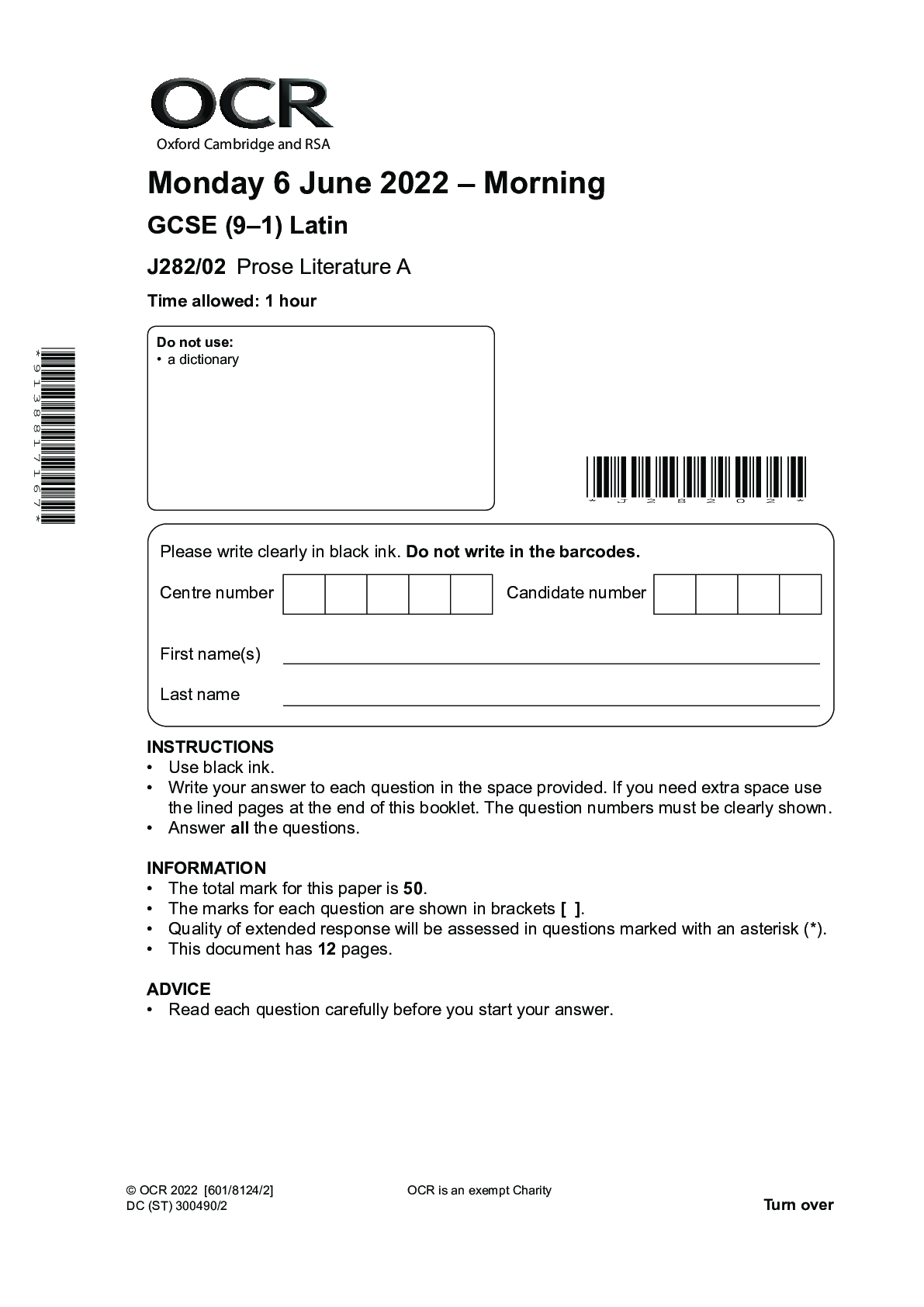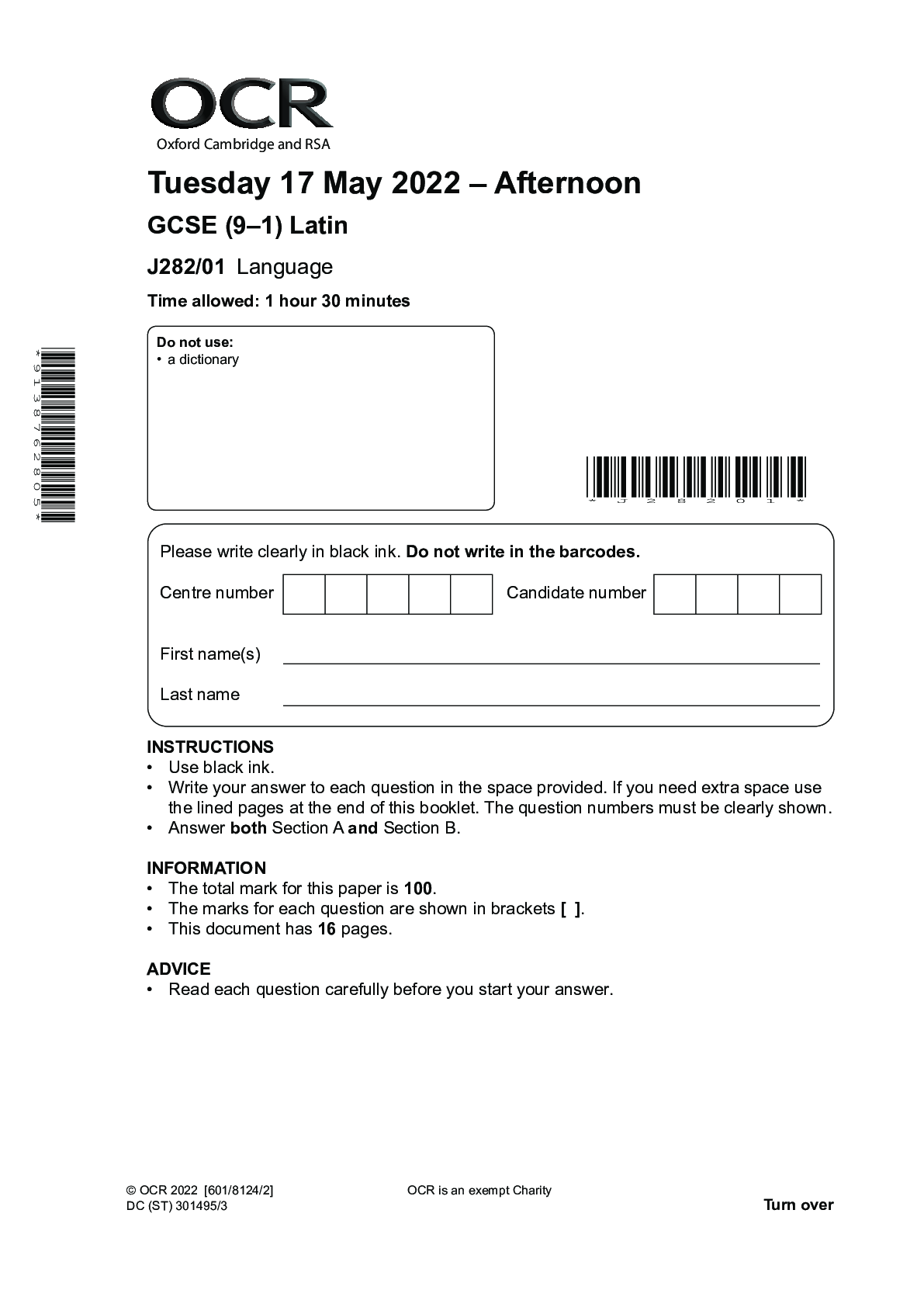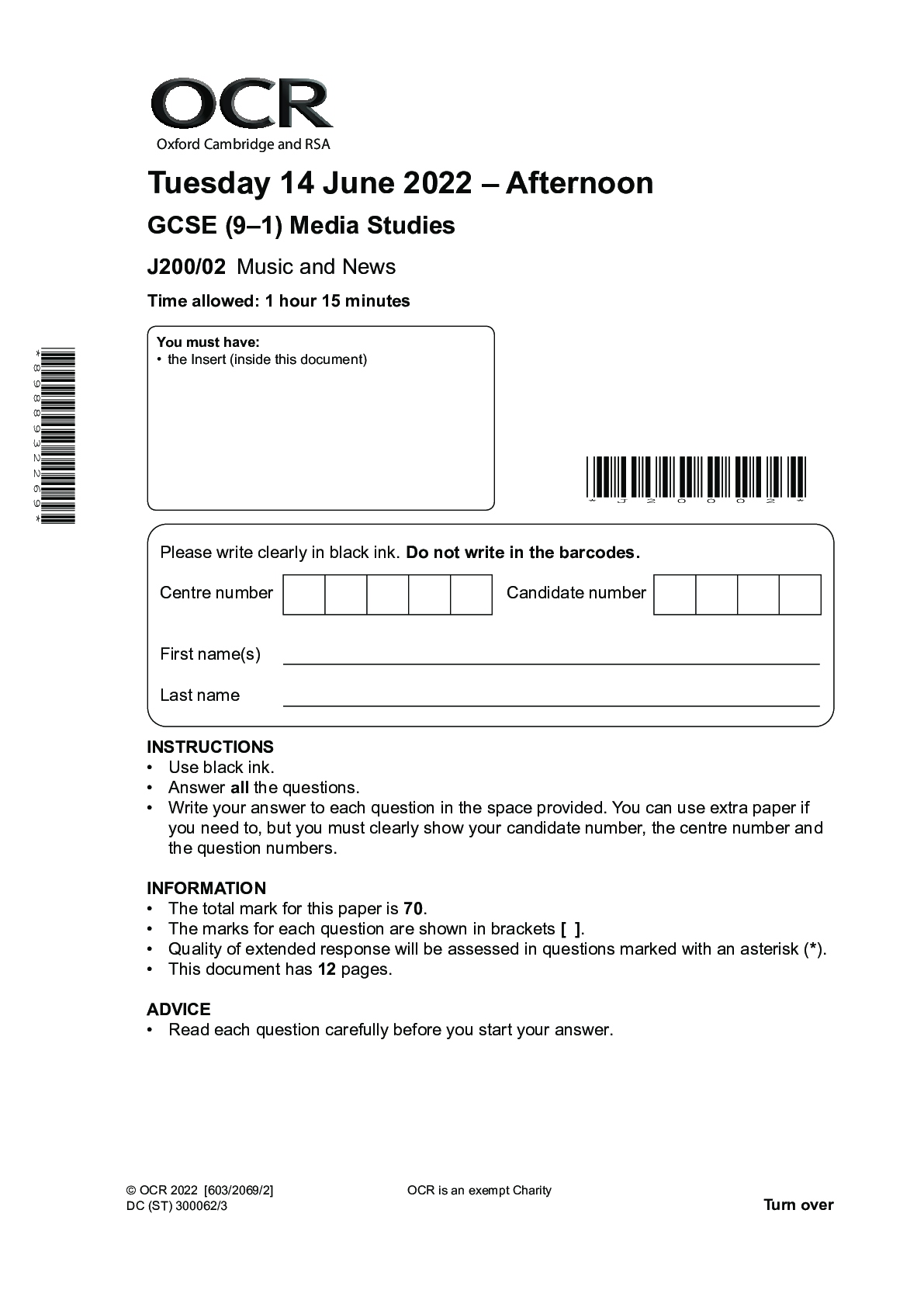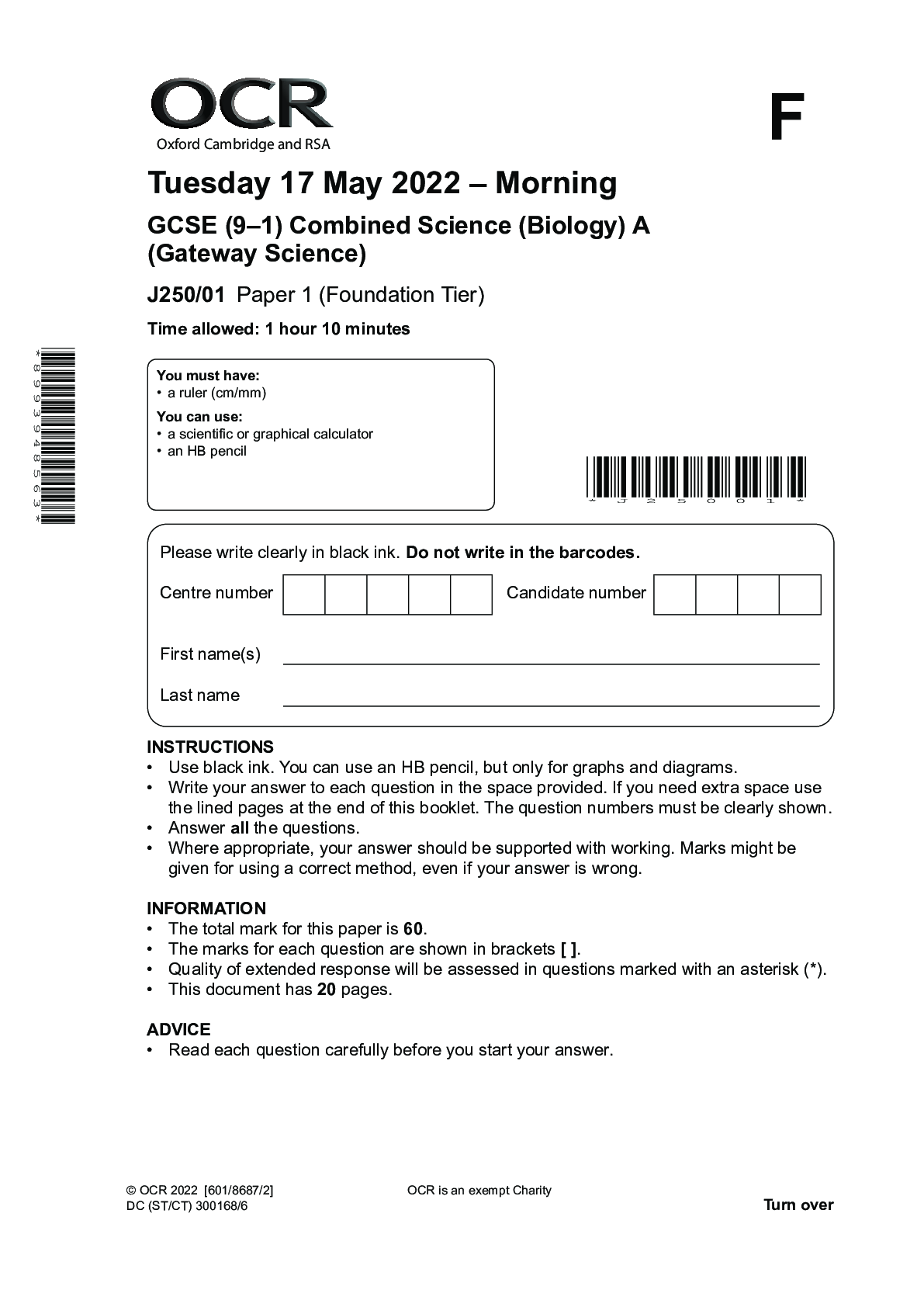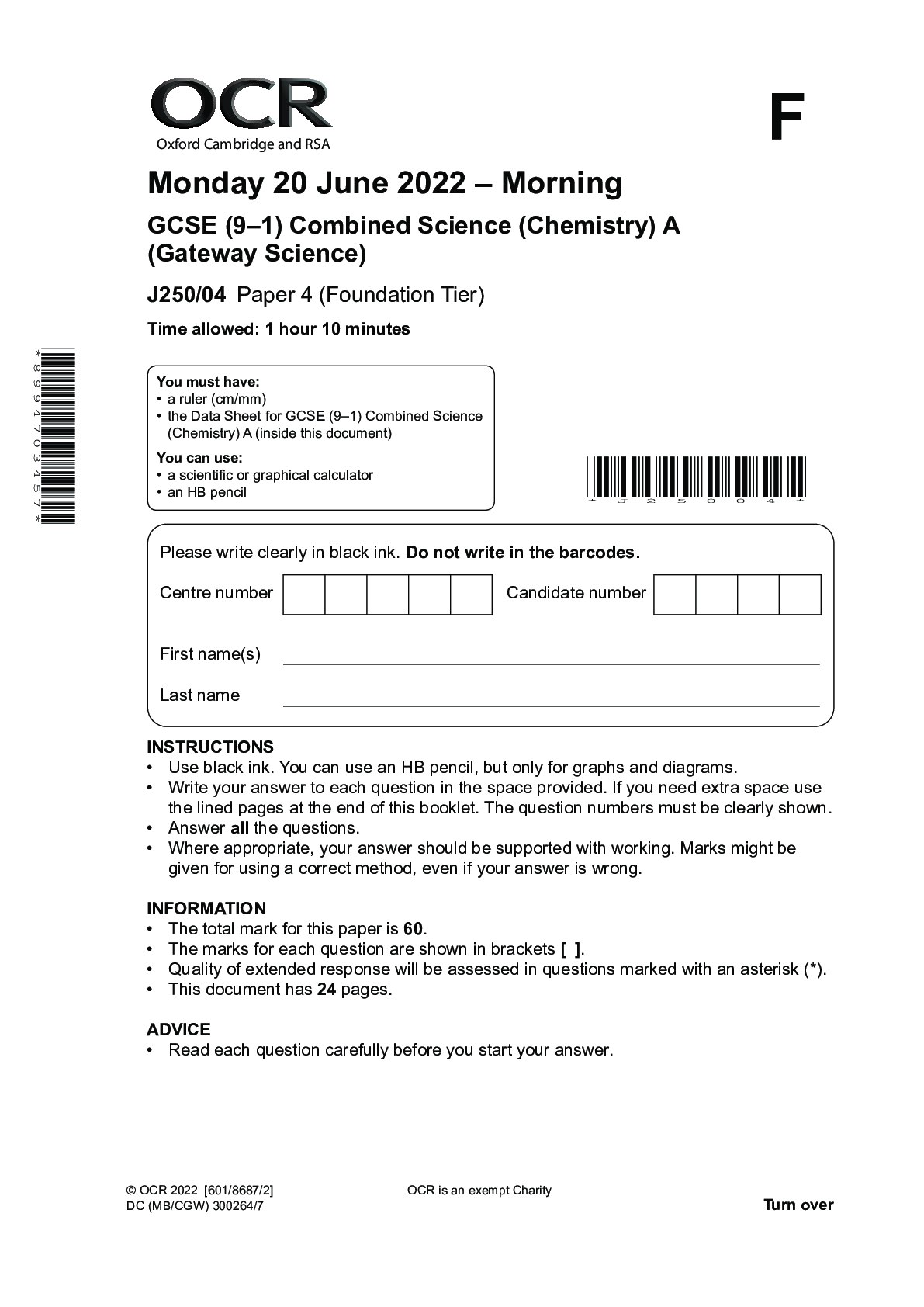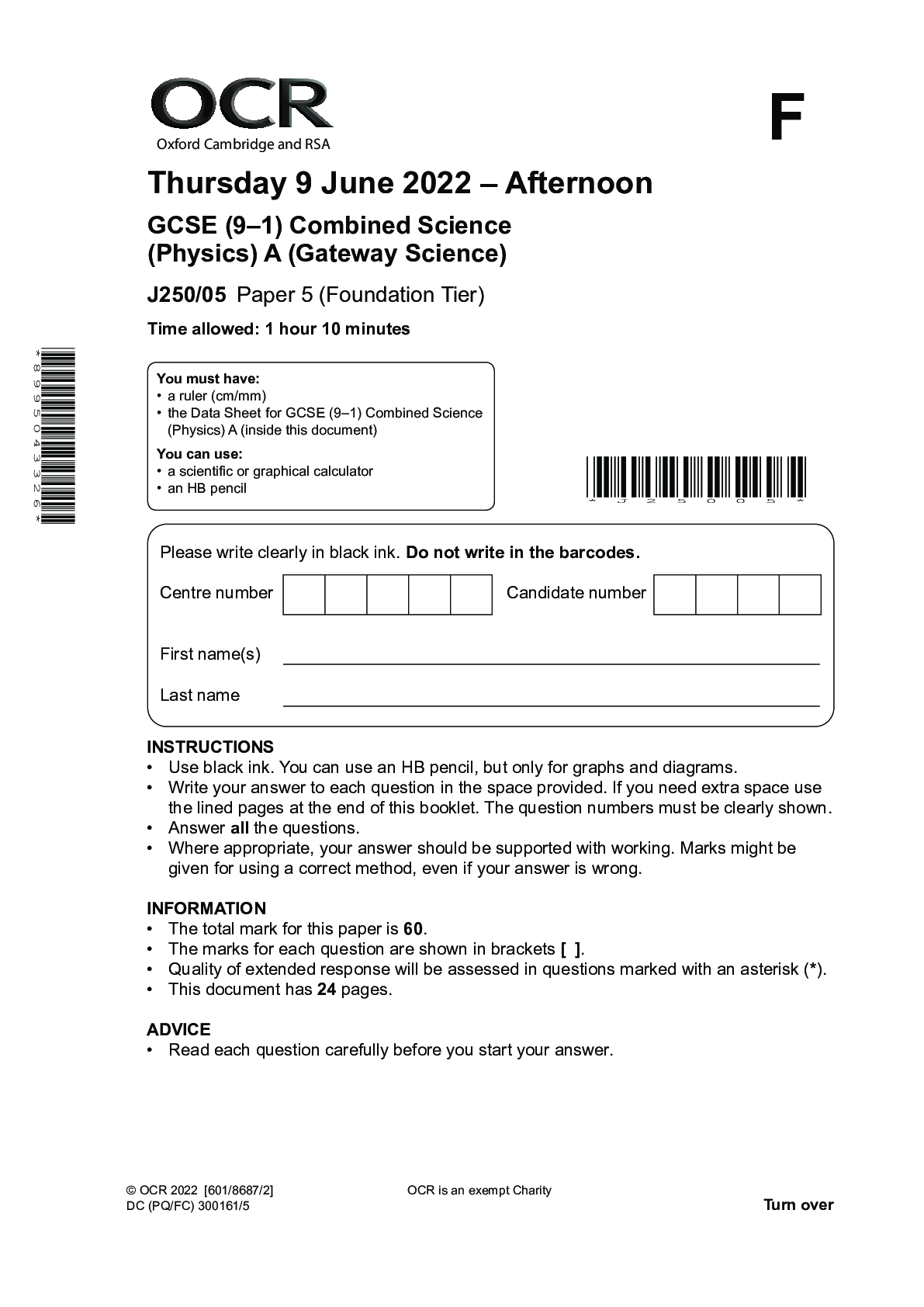Combined Science: Synergy > QUESTION PAPER (QP) > Pearson Edexcel Level 1 /Level 2 GCSE (9-1 ) Time 1 hour 10 minutes Paper reference 1 sco/l BH Combi (All)
Pearson Edexcel Level 1 /Level 2 GCSE (9-1 ) Time 1 hour 10 minutes Paper reference 1 sco/l BH Combined Science PAPER 1 Higher tier
Document Content and Description Below
Instructions • Use black ink or ball-point pen. • Fill in the boxes at the top of this page with your name, centre number and candidate number. • Answer all questions. • Answer the quest... ions in the spaces provided – there may be more space than you need. Information • The total mark for this paper is 60. • The marks for each question are shown in brackets – use this as a guide as to how much time to spend on each question. • In questions marked with an asterisk (*), marks will be awarded for your ability to structure your answer logically, showing how the points that you make are related or follow on from each other where appropriate. Advice • Read each question carefully before you start to answer it. • Try to answer every question. • Check your answers if you have time at the end. You must have: Ruler, calculator Combined Science PAPER 1 Higher tier Time 1 hour 10 minutes 1SC0/1BH Pearson Edexcel Level 1/Level 2 GCSE (9–1) *P69482A0216* 2 Answer ALL questions. Write your answers in the spaces provided. Some questions must be answered with a cross in a box . If you change your mind about an answer, put a line through the box and then mark your new answer with a cross . 1 (a) DNA molecules contain base pairs. Describe how the base pairs are bonded together in a DNA molecule. (2) .................................................................................................................................................................................................................................................................................... .................................................................................................................................................................................................................................................................................... .................................................................................................................................................................................................................................................................................... .................................................................................................................................................................................................................................................................................... (b) Figure 1 shows part of a DNA molecule. T T G A T T G C G T A A Figure 1 (i) Write the code for the complementary DNA strand in Figure 1. (2) (ii) Three bases code for each amino acid. Which is the maximum number of amino acids coded for by this strand of DNA? (1) A 3 B 4 C 6 D 12 (iii) What is the shape of a DNA molecule? (1) A triple stranded B single stranded C single helix D double helix *P69482A0316* Turn over 3 (c) A student wanted to extract the DNA from fresh peas. The student crushed the peas and added washing up liquid and water. The enzyme protease was then added to this mixture. (i) Explain why the enzyme protease was added to the mixture. (2) .................................................................................................................................................................................................................................................................................... .................................................................................................................................................................................................................................................................................... .................................................................................................................................................................................................................................................................................... .................................................................................................................................................................................................................................................................................... .................................................................................................................................................................................................................................................................................... .................................................................................................................................................................................................................................................................................... (ii) The mixture was then heated and filtered. Finally, the student poured the filtrate into a test tube and ice cold ethanol was poured down the side of the test tube into the filtrate. State why ice cold ethanol was poured into the filtrate. (1) .................................................................................................................................................................................................................................................................................... .................................................................................................................................................................................................................................................................................... .................................................................................................................................................................................................................................................................................... (Total for Question 1 = 9 marks) *P69482A0416* 4 2 (a) Figure 2 shows the number of people diagnosed with sexually transmitted infections (STIs) in the UK during 2017. sexually transmitted infection (STI) number of people diagnosed per 1000 of the population chlamydia 3.7 gonorrhoea 0.8 genital herpes 0.6 genital warts 1.1 syphilis 0.1 Figure 2 (i) State the sexually transmitted infection that has the median number of people diagnosed. (1) .................................................................................................................................................................................................................................................................................... (ii) The population of the UK in 2017 was 66 million people. Calculate the total number of people diagnosed with chlamydia in the UK in 2017. (2) .............................................................. people (iii) State why chlamydia can be described as a communicable disease. (1) .................................................................................................................................................................................................................................................................................... .................................................................................................................................................................................................................................................................................... (iv) Give one way the transmission of chlamydia can be prevented. (1) .................................................................................................................................................................................................................................................................................... .................................................................................................................................................................................................................................................................................... *P69482A0516* Turn over 5 (v) Explain why chlamydia can be treated with antibiotics. (2) .................................................................................................................................................................................................................................................................................... .................................................................................................................................................................................................................................................................................... .................................................................................................................................................................................................................................................................................... .................................................................................................................................................................................................................................................................................... (b) HIV is another sexually transmitted infection. Explain how HIV can lead to the onset of AIDS. (2) .................................................................................................................................................................................................................................................................................... .................................................................................................................................................................................................................................................................................... .................................................................................................................................................................................................................................................................................... .................................................................................................................................................................................................................................................................................... (Total for Question 2 = 9 marks) *P69482A0616* 6 3 (a) In 2017, a new strain of Klebsiella pneumoniae bacteria was discovered that was resistant to 26 different antibiotics. (i) Explain how Klebsiella pneumoniae bacteria developed resistance to antibiotics. (4) .................................................................................................................................................................................................................................................................................... .................................................................................................................................................................................................................................................................................... .................................................................................................................................................................................................................................................................................... .................................................................................................................................................................................................................................................................................... .................................................................................................................................................................................................................................................................................... .................................................................................................................................................................................................................................................................................... .................................................................................................................................................................................................................................................................................... .................................................................................................................................................................................................................................................................................... .................................................................................................................................................................................................................................................................................... .................................................................................................................................................................................................................................................................................... (ii) State how the use of antibiotics could contribute to Klebsiella pneumoniae bacteria developing resistance to antibiotics. (1) .................................................................................................................................................................................................................................................................................... .................................................................................................................................................................................................................................................................................... (iii) Klebsiella pneumoniae is a prokaryotic cell. Which is a characteristic feature of a prokaryotic cell? (1) A it has chloroplasts B it does not have a nucleus C it does not have ribosomes D it cannot reproduce without a host *P69482A0716* Turn over 7 (b) New antibiotics are being developed to treat the disease caused by Klebsiella pneumoniae. Describe the stages of antibiotic development that would occur after the discovery of a new antibiotic. (3) .................................................................................................................................................................................................................................................................................... .................................................................................................................................................................................................................................................................................... .................................................................................................................................................................................................................................................................................... .................................................................................................................................................................................................................................................................................... .................................................................................................................................................................................................................................................................................... .................................................................................................................................................................................................................................................................................... .................................................................................................................................................................................................................................................................................... (Total for Question 3 = 9 marks) *P69482A0816* 8 BLANK PAGE *P69482A0916* Turn over 9 4 A student investigated the fat content of two types of milk: milk A and milk B. Before starting the investigation, the student added a drop of oil from a pipette into a test tube of water as shown in Figure 3. The drop of oil rose to the surface of the water. (Source: © Nana_studio/Shutterstock) Figure 3 (a) The student then placed a drop of milk A into one test tube of water and a drop of milk B into a different test tube of water. The drop of milk A sank to the bottom and th [Show More]
Last updated: 2 years ago
Preview 1 out of 16 pages
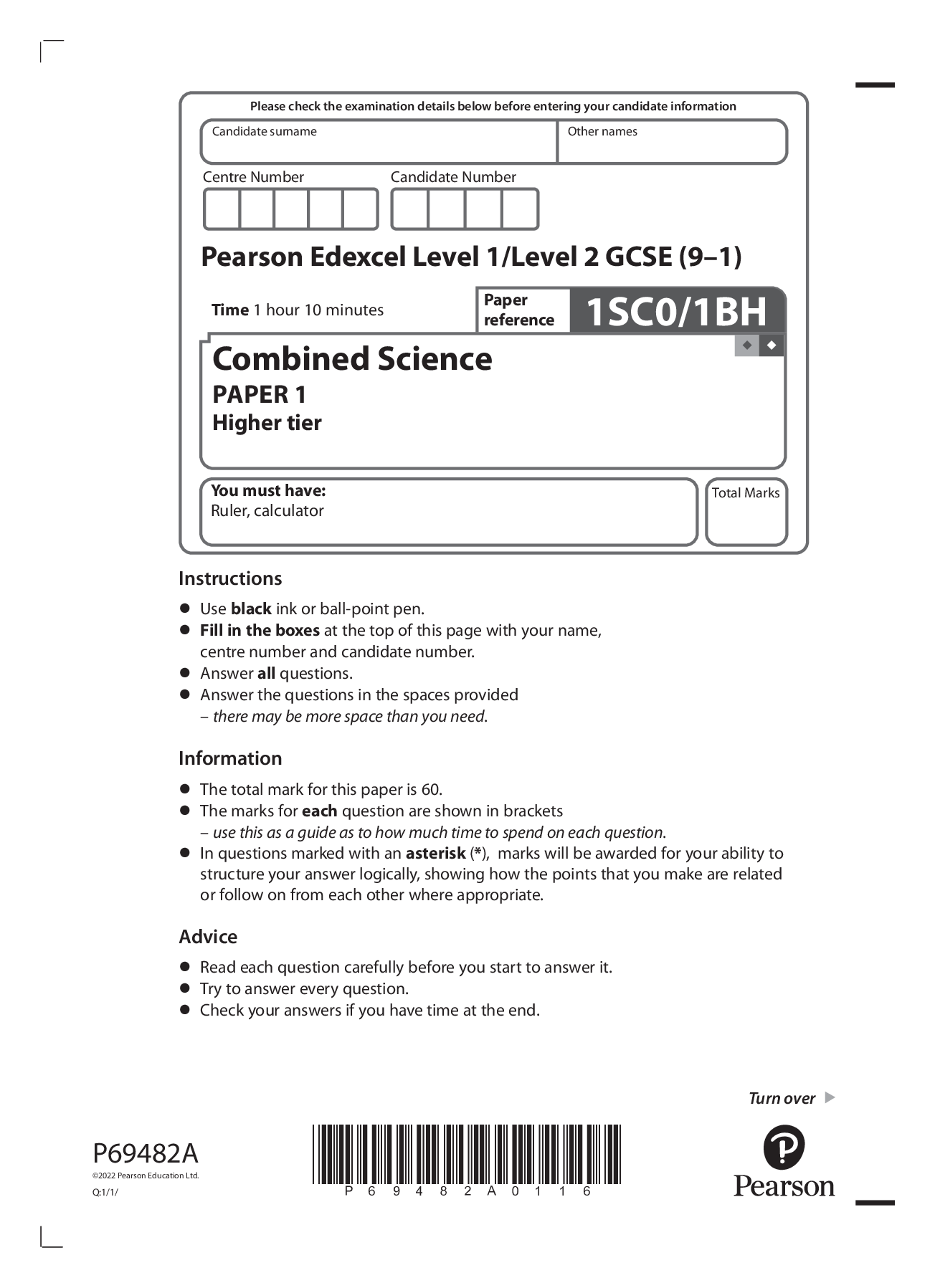
Buy this document to get the full access instantly
Instant Download Access after purchase
Buy NowInstant download
We Accept:

Reviews( 0 )
$7.00
Can't find what you want? Try our AI powered Search
Document information
Connected school, study & course
About the document
Uploaded On
Apr 03, 2023
Number of pages
16
Written in
Additional information
This document has been written for:
Uploaded
Apr 03, 2023
Downloads
0
Views
146

